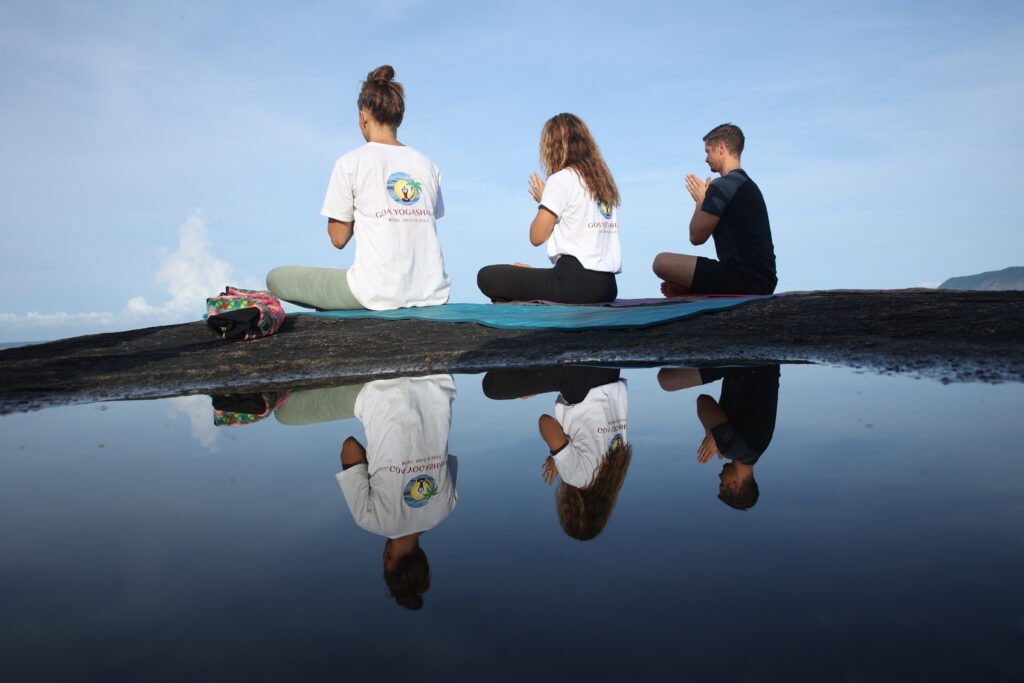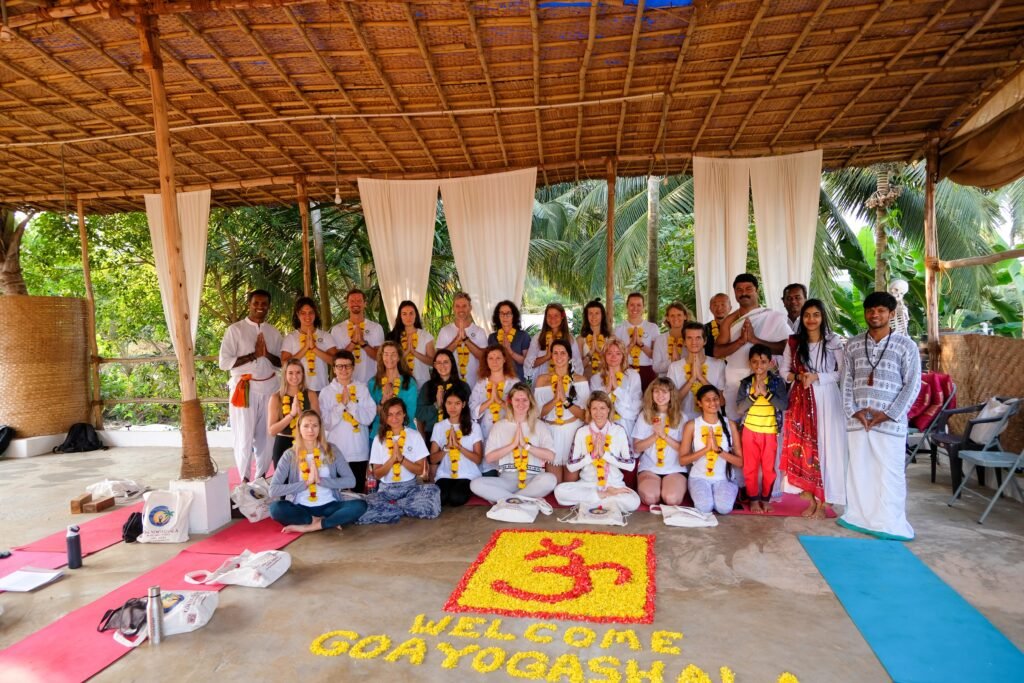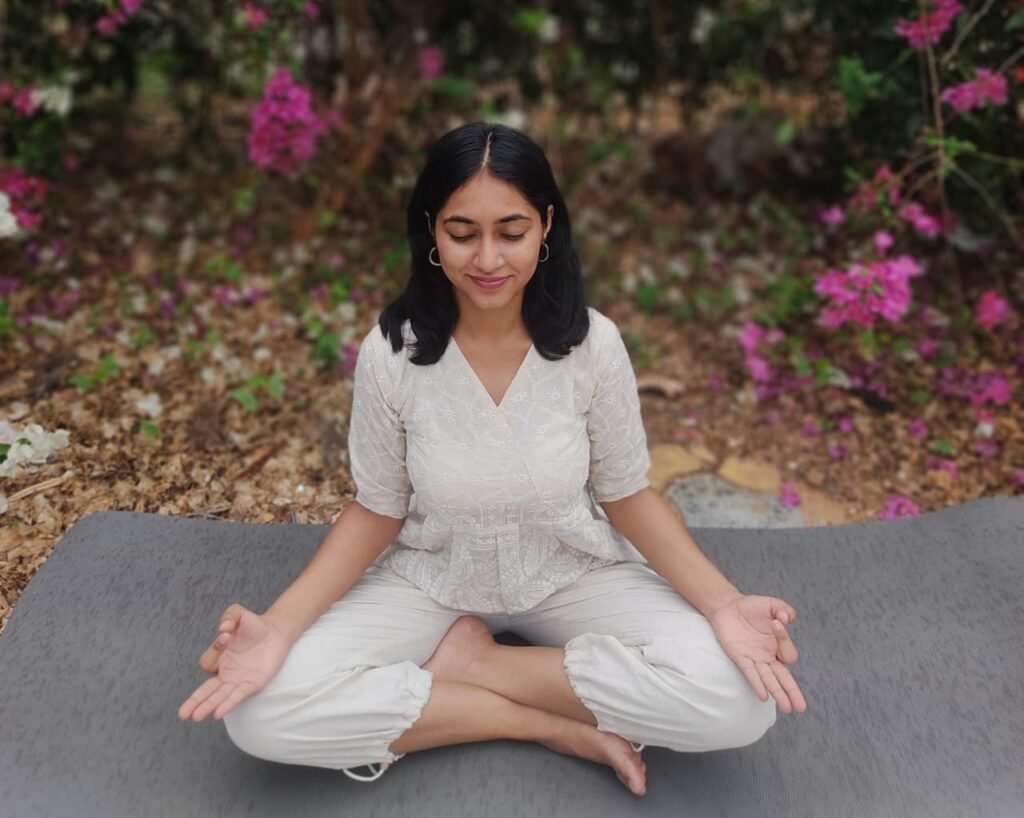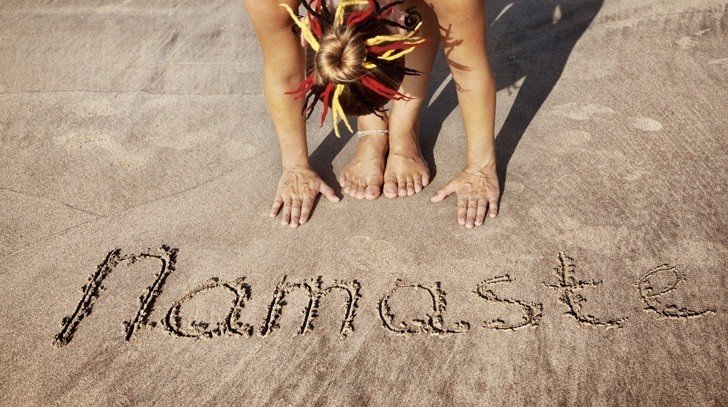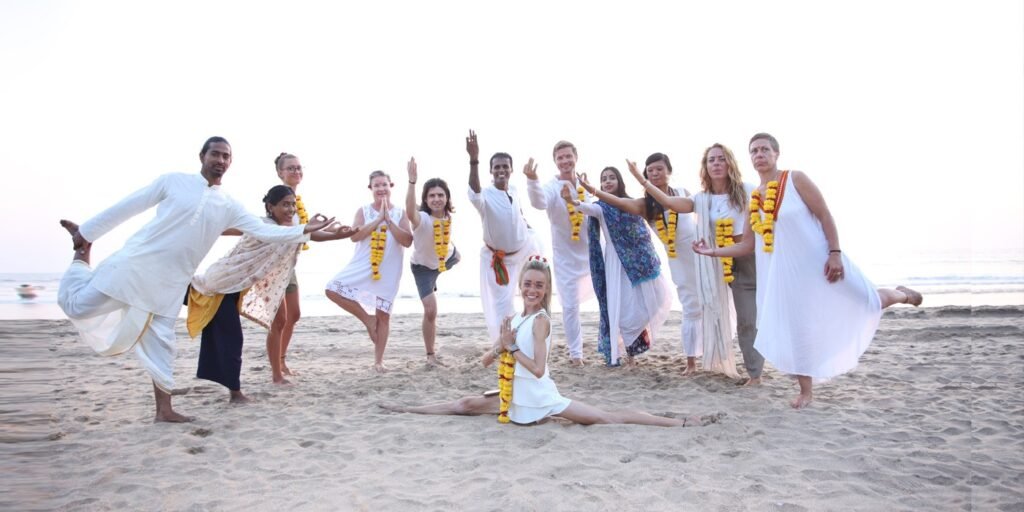Sun Salutations or Surya Namaskar is a symbolic and spiritually enriching sequence of yoga poses that enhances your overall wellness journey. It is deeply rooted in the age-old traditions of India and is culturally practiced during the sunrise as it symbolizes gratitude to the sun. There are a total of twelve steps in the sequence of Surya Namaskar, which is a powerful combination of strengthening, breathing, balancing, and deep stretching.
For yoga practitioners who are seeking to deepen their daily wellness routine or wish to have greater impact on their yoga journey, Sun Salutations are the perfect opportunity for them to start. These 12 yoga asanas in a sequence are beneficial not only energetically, but they also help in building the foundation of various modern day yoga routines.
In this article, you will be learning about the importance, history, and analysis of Surya Namaskar so that you are well aware about all the essential benefits they provide. Whether you are a newbie or an experienced yogi looking for meaningful yoga sessions, understanding every pose in Surya Namaskar will be transforming your well journey a lot.
History and Significance of Surya Namaskar
Surya Namaskar has a history dating back thousands of years during the Vedic period. In the classical Vedic texts, the Sun is referred to as a divine entity which represents the source of life on Earth and consciousness. The sadhus and sages had a daily ritual of offering water and chanting hymns to the rising sun.
Every yoga pose in Surya Namaskar is correlated to one another and is aligned with the sun’s 12 names such as Ravih, Mitra, Surya, etc. This sequence of asanas resembles a form of moving prayer and activates the 7 chakras present in your body. Spiritually, the sun is said to symbolize the light of inner-awareness. Surya Namaskar is used for awakening your inner consciousness and mental clarity. Although the popularity of Surya Namaskar increased in the modern times, the essence of these practices have been deeply grounded in the age-old Indian rituals and traditions.
The 12 Asanas of Surya Namaskar

Pranamasana (Prayer Pose)
Pranamasana, also known as Anjali Mudra is the foundation of Surya Namaskar and is a gesture shown as respect, devotion, and gratitude. This is a common pose practiced as a greeting sign in India. It might seem simple and basic but it helps you to align with your posture, centre your mind, and connect with your breath.
How to do it-
- Stand tall and bring your feet together.
- Focus on your breathing, inhale deeply and bring your palms together in front of your chest.
- Close your eyes and focus on your inner-awakening.
- While joining your palms together, make sure to relax your shoulders and arms for added benefits.
Benefits-
- Pranamasana helps in reducing your stress, frequent burnouts, and anxiety.
- This allows your nervous system to relax completely and have mental clarity.
- It also maintains the balance of your entire body.
13 Yoga Poses For 2 People (Couple Yoga Poses)
Hasta Uttanasana (Raised Arm Pose)
Hasta Uttanasana or Raised Arm pose is the second asana of Surya Namaskar and helps in opening up your front body. “Hasta” in Sanskrit refers to Hand and “Uttanasana” refers to the stretches in the upward direction. This asana represents that you are reaching out to the universe and are accepting the energy provided by the sun. Symbolically, Hasta Uttanasana is an offering to the sky and an invocation to the universe’s cosmic energies to revive vitality and boost your self-confidence.
How to do it-
- After pranamasana, inhale and raise your arms over your head.
- You can slightly stretch and arch your back while keeping your arms closer to the ears.
- Try to engage your core and avoid putting any excessive strain on your lower back.
- Push your pelvis in the forward direction.
Benefits-
- This asana helps in toning your abdominal muscles and also improves digestion.
- It eases the excessive pain and stress on your lower back
- Allows the nervous system to stimulate and stretches your body completely from head to toe.
Padahastasana (Hand to Foot pose)
Hasta Padasana, also known as Hand to Foot pose, is a yoga pose that signifies surrendering from both mind as well as body. It is a forward bending pose that allows you to deeply support humility in your overall body. “Pada” in Sanskrit means feet/legs and “Hasta” refers to hands.
How to do it-
- From Hasta Uttanasana, bend forward from your hip area while exhaling.
- Try to touch your toes and keep your knees straight.
- If you can easily touch your toes, then try to place your palms on the floor besides your feet.
- Make sure that you are not bending your spine or knees.
- Keep your shoulders relaxed and press your heels gently, so that your body weight is evenly balanced out.
Benefits-
- It stretches your hamstrings, spine, and calves, along with gently massaging your abdominal organs.
- It fixes digestive issues in your body and regulates proper blood flow throughout your body.
- It relieves tension from the lower back, enhances mental clarity and calmness, and cures migraine.
- This yoga pose also encourages self-reflection and humility.
- It is said to be a grounding pose which will allow you to turn inward and release the excessive stress and tension that no longer serves you.
Types of Yoga: A Guide to the Different Styles
Ashwa Sanchalanasana (Equestrian Pose)
Ashwa Sanchalanasana, also known as the Equestrian Pose, is the fourth asana of Surya Namaskar. It signifies strength, determination, and forward momentum with a pace, as “Ashwa” means Horse and “Sanchalan” means Movement.
Ashwa Sanchalanasana, or the Equestrian Pose, mimics the stance of a galloping horse—symbolizing strength, forward momentum, and determination. In this pose, one leg is extended back while the other is bent with the foot firmly on the ground, and both hands rest beside the front foot. The chest is lifted, the back arches slightly, and the gaze is directed forward. This posture stretches the hips, opens the chest, and strengthens the legs. It also improves balance and coordination. Energetically, it helps activate the root and sacral chakras, grounding you while preparing for dynamic movement ahead.
How to do it-
- From Padahastansana, put your right leg backward and lower your knee to the floor, while inhaling.
- Now, put your left leg forward and lift your chest to look in the upward direction.
- Keep your back a little arched, adjust your thighs and engage in balancing, to even out your body weight.
Benefits-
- This pose stretches your hips and opens up the flexors.
- It improves your lung’s capacity
- It also enhances blood circulation throughout your body.
- Boosts your digestive system and improves spinal flexibility.
- Helps in activating the root chakras and keeps you grounded while preparing you for the dynamic poses ahead.
Dandasana (Stick Pose)
Dandasana is also known as the stick pose and is the fifth yoga asana of the Sun Salutation sequence. It is a full body strength builder and helps in aligning your body from head to toe in a straight line. It might look simple, but holding this asana demands decent muscular endurance and concentration.
How to do it-
- From Ashwa Sanchalanasana, put your left leg back with the right leg in the position of a plank along with exhaling.
- Keep your shoulders, elbows, and wrists at a ninety degree angle against the floor and keep your body in a straight line.
- Engage your core while performing this asana and widen your collar bones.
- Make sure that your neck is relaxed and is aligned properly with your spine.
Benefits-
- It trains mental stamina and regulates stability.
- This yoga pose strengthens your arms, shoulders, and entire upper body.
- It builds endurance and improves overall balance.
- Helps your nervous system to calm down and enhances your posture.
What Is Hatha Yoga And Why Do You Need It?
Ashtanga Namaskar (Eight-Limbed Pose)
Ashtanga Namaskar is an eight-limbed pose that signifies full devotion of your body with the help of eight points of contact, which are- the feet, knees, hands, chest, and chin. It represents full surrender and is a reminder that strength lies in humility. Ashtanga Namaskar is a great yoga pose to prepare your body for the entire day.
How to do it-
- From Dandasana, put both your knees down on the floor.
- Rest your chin on the floor and lift your hip area a little.
- Ensure that your chin, chest, knees, and hands are touching the floor and your posterior is held in the air.
Benefits-
- It tones your arms and focuses on improving spinal flexibility.
- This yoga pose relieves you from the stress on your shoulders, spine, and neck.
- It stimulates your digestive system and treats constipation.
- This yoga pose also helps in activating the energy chakras in your body.
Bhujangasana (Cobra Pose)
Bhujangasana, also known as the Cobra Pose, is the seventh asana of the Surya Namaskar sequence. It signifies rising above all the challenges and transforming yourself to do better just like how a cobra lifts up his hood. It is a heart-opening bending asana that focuses on rejuvenation and radiating energy.
How to do it-
- From Ashtanga Namaskar, raise your head and bend backwards while inhaling deeply.
- Keep both your palms in the resting position on the mat and make sure that your elbows are slightly bent.
- Roll your shoulders backwards and keep your neck relaxed.
- Make sure to keep your legs and torso resting on the floor.
Benefits-
- This yoga pose helps in stretching your torso and increasing its overall strength.
- It focuses on toning your abdominal muscles and relieves back pain.
- Bhujangasana eases the symptoms of asthma, improves blood circulation, and is also helpful during the menstrual cycle of women.
Adho Mukha Svanasana (Downward facing Dog Pose)
Adho Mukha Svanasana, also known as Downward facing Dog Pose, is the eighth yoga pose of the Sun Salutation sequence. It represents internal grounding and complete rejuvenation of your body.
How to do it-
- From Adho Mukha Svanasana, lift your hips in the upward direction while exhaling deeply.
- Push your heels in the downward direction on the floor or on the mat.
- Drop down your head and look towards your naval
- Ensure that your body weight is evenly balanced
- Keep your neck and shoulders relaxed and stretch your body while looking in the downward direction.
Benefits-
- This yoga pose awakens the Ajna chakra and sharpens your inner vision.
- Focuses on reducing the cause of your stress and anxiety.
- Calms the nervous system and improves blood circulation.
- Relieves from frequent headaches and the symptoms of menopause.
Ashwa Sanchalanasana (Equestrian Pose with Opposite leg)
From here, all the asanas are going to repeat. After moving back from adho mukha svanasana, position yourself in Ashwa Sanchalanasana but with the opposite foot.
How to do it-
- From Adho Mukha Svanasana, put your right leg in the forward direction.
- Then keep your left leg behind and look in the forward direction
- Push your lower back towards the mat to deepen the stretch.
Benefits-
- Improves lung capacity, concentration, and digestion.
- Enhances spinal flexibility and boosts blood circulation throughout your body.
- Calms your nervous system and helps in mental clarity.
Hasta Padasana (Hand to Foot Pose)
From the Ashwa Sanchalanasana, position yourself to Hasta Padasana. Remember that you need to inhale and exhale properly while switching from every asana.
How to do it-
- Moving from the Equestrian pose, switch to Hasta Padasana while exhaling deeply.
- Bring your left foot in the forward direction and bend your hips.
- Touch your toes while keeping your knees straight.
Benefits-
- Provides relief from osteoporosis and insomnia.
- Reduces constant burnouts and anxiety
- Relieves migraine pain and frequent headaches
- Strengthens your legs, especially thighs and hamstrings.
Hasta Uttanasana (Returned Raised Arm Pose)
From Ashwa Sanchalanasana, switch to Hasta Uttanasana as it is an essential pose of the Surya Namaskar sequences. It is considered to be one of the best for your hamstrings and spine and strengthens your arms muscles as well.
How to do it-
- While inhaling, raise your arms above your head and stretch backwards.
- Look upwards while you are bending backwards and keep your core engaged.
Benefits-
- This yoga pose helps in toning the muscles of your abdomen and fixes any digestive issues.
- It eases the excessive stress or pain in your lower back area
- Calms down your nervous system and stretches your body completely.
Pranamasana (Return Prayer Pose)
This is the last pose of Surya Namaskar and was also the first pose of the sequence. Moving back from Hasta Uttanasana, exhale deeply and relax yourself. This is the easiest yoga pose of the sequence and can be performed even without the expert guidance.
How to do it-
- Switch from Hasta Uttanasana to Pranamasana and bring back your arms to the centre of your chest.
- Stand straight and relax your body completely
- You will notice that now you have completed the first round of the 12 yoga poses in the Surya Namaskar sequence.
Benefits-
- This yoga pose cures the symptoms of anxiety and stress
- It relaxes your nervous system and helps in mental clarity
- Maintains the internal balance and grounding of your body.
Tips for Practicing Surya Namaskar
Below are some important tips you should consider while performing the poses of Surya Namaskar.
- Practice the rounds of Surya Namaskar on an empty stomach in the morning to get the best results.
- Always listen to your body and stop yourself if you feel any pain or uneasiness.
- Initially start with 3 to 4 rounds daily and then gradually increase according to the comfort of your body.
- Maintain a normal breathing pattern throughout the sequence for more benefits.
- Practice in a quiet and fresh environment as it will calm your mind and help you in focusing better, without distractions.
- Pay attention to your alignment of every pose in order to prevent serious injuries.
Surya Namaskar is considered more than just a physical exercise. It is a moving prayer and a celebration of life as well as a deep connection to the cosmos. By incorporating this in your daily routine, you will transform your overall wellness in no time. These 12 yoga poses of Surya Namaskar are a connecting bridge between your physical movements and mindful meditation. By understanding the meaning and benefit behind each pose, you will have an elevated mindset about practicing it with a true purpose.

